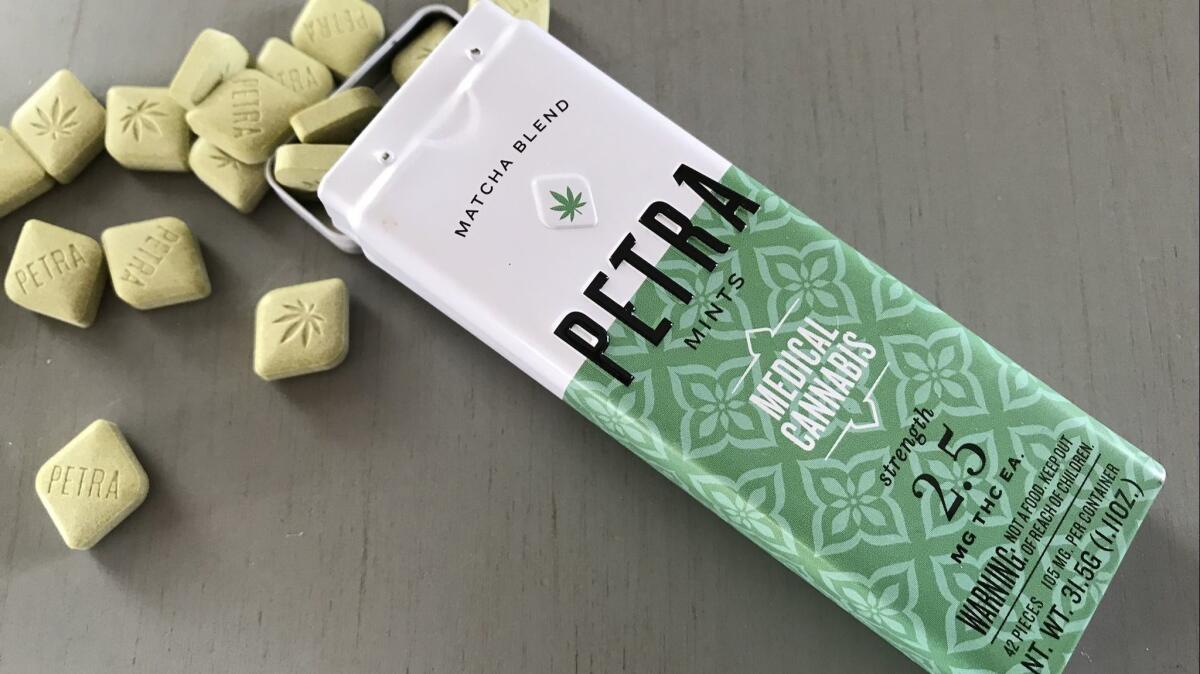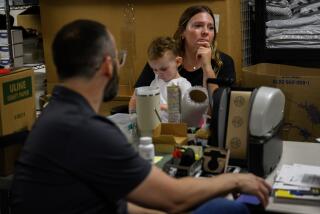Column: How to try edible cannabis without feeling like you’re going to die

One evening late last year I was on my computer at home when I heard a woman yelling. Well, not just yelling. More like screaming bloody murder.
I ran outside and discovered the noise was coming from the house next door. I bounded in and found my neighbor in her bedroom, alternately curled on her bed, then sitting up screaming. Her dogs were cowering.
She had bitten off a chunk of a cannabis-infused caramel that contained a total of 100 milligrams of THC. She had probably consumed between 10 milligrams and 15 milligrams. A standard dose for experienced users is around 10 milligrams, but as a cannabis expert friend of mine says, “Your mileage may vary.”
Having spent the last couple of years learning about cannabis, I knew that she was not going to die. But she was in such distress that I suggested that her husband call 911.
::
“As a business owner, those are the nightmare scenarios that we have worked really hard to prevent over the years,” said Kristi Knoblich, who, along with her husband, Scott Palmer, own Kiva Confections, one of the largest edible cannabis companies in the state. “You may feel like you are going to die, but you are not going to die — that’s not great marketing language.”
As California enters the brave and complex world of cannabis legalization, it’s important that consumers who choose to experiment with pot understand how to avoid ending up like my neighbor. Inexperienced users who want to dabble, especially with edibles, owe it to themselves to get educated.
“Dosing and storage are the two areas we need to bring awareness to,” Knoblich said.
::

The state’s Bureau of Cannabis Control and the Department of Public Health have created rules and regulations designed to keep the public safe. But the public, obviously, has an obligation to keep itself safe too.
The rules cover all aspects of the manufacturing process, including product design (edibles cannot be packaged in a way that is attractive to children, nor can the product itself look like kids’ candy). And there are stringent requirements for child-resistant packaging, which are adding considerably to the cost of every product.
“‘Child resistance’ is a really nice talking point,” Knoblich said. “It sounds great on paper. But, honestly, parents need to lock this stuff up. Like their guns and their alcohol cabinet. Cannabis needs to be in an area that is completely inaccessible to children.”
The new law says that one serving of an edible can contain no more than 10 milligrams of THC, the psychoactive ingredient in cannabis, with no more than 100 mgs allowed in a single product package.
(Think of a segmented chocolate bar.)
But for inexperienced users, 10 milligrams is probably way too much.
Knoblich and her husband are proponents of microdosing. Generally, a microdose is defined as an amount between 2.5 milligrams and 5 milligrams of THC.
“It’s difficult to explain to people what the effects are going to be, but I try to use a glass of wine analogy,” Knoblich said as we sat in the conference room of her factory in West Oakland last month.
“A microdose of 2.5 milligrams may be like one glass of wine for someone, and 5 milligrams might be like two glasses of wine. The frustrating part about cannabis is that every amount affects everybody differently, so you run the risk of not feeling it, then getting frustrated. And then you want to take more, which can be a mistake.”
Indeed.
Although a glass of wine goes to your head immediately, it can take up to two hours to feel the full effect of an edible. This is where so many people get into trouble.
“There is not a lot of research on how external factors affect you, but food in your stomach, what your metabolism is like, and alcohol, can add to the intensity of the effects,” Knoblich said. “Two hours is a realistic amount of time to wait to see.”
Also, if I may: Don’t ever eat homemade marijuana brownies. You have no idea how much THC you are getting, and you may end up feeling as if you are going to die.
::
One major byproduct of legalization has been the dramatic increase in the cost of doing business. All marijuana entrepreneurs must obtain local and state licenses, which are expensive.
Taxes have been levied on cannabis at nearly every point between cultivation and retail sales. In addition to state taxes, cities and counties can impose taxes of their own. Oakland, for example, where Kiva is based, levies a 10% tax on gross receipts, which has prompted the company to look for a location in a lower-tax city. To keep and attract cannabis businesses, the city of Berkeley recently slashed its tax from 10% to 5%.
For consumers, all the taxes mean retail prices have spiked, even as the wholesale price of raw cannabis has plummeted.
One of Kiva’s most popular products, a small round tin containing chocolate-covered blueberries (each berry has 5 milligrams of THC and can easily be cut in half) retailed last year for about $19. This year, the same tin retails for closer to $30.
“The most poignant piece of feedback we got from a consumer is, ‘If I had known that prices are going to be this high in the regulated market, I wouldn’t have voted to legalize cannabis,’” Knoblich said.
::
Shortly after we called 911, the paramedics arrived.
By their demeanor, I could see there was nothing special about this “emergency.”
My neighbor’s vitals were fine, and she had calmed down. She declined an offer to be transported to the ER. But one of the paramedics said something that upset her, and she started screaming again, so they took her anyway. After a few hours of observation, she was sent home.
The next morning she was a little embarrassed but fine. She told me that she had hallucinated that her contractor was trying to steal her home out from under her.
As I told the story to Knoblich, I found myself chuckling.
“I don’t want to downplay the severity of feeling like you are out of control,” Knoblich said. “But a lot of people present these stories the way you did: ‘This happened to my neighbor, it was absolutely terrible,’ and when you get to the end of the story, you’re kind of laughing.”
To read this article in Spanish click here
Twitter: @AbcarianLAT



